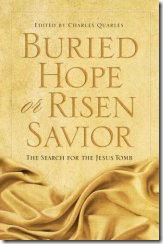The publisher of this biography has posted the following on the ANE-2 list.
I’m pleased to announce publication of the first full length biography of archaeologist Kathleen Kenyon by Miriam Davis, a historian at Delta State University. Miriam had full access to the Kenyon family’s materials and interviewed dozens of archaeologists on 4 continents for her work. The book is published in a series sponsored by the Institute of Archaeology, University College London, which provided the peer review. It’s also been reviewed by Bill Dever and Tom Holland, among others (see their comments on our website). The official blurb:
Dame Kathleen Kenyon
Digging Up the Holy Land
by Miriam C. Davis
978-1-59874-325-8 cloth
978-1-59874-326-5 paper
March 2008 272 pages, photos Dame Kathleen Kenyon has always been a larger-than-life figure, likely the mostinfluential woman archaeologist of the 20th century. In the first full-length biography of Kenyon, Miriam Davis recounts not only her many achievements in the field but also her personal side, known to very few of her contemporaries. Her public side is a catalog of major successes: discovering the oldest city at Jericho with its amazing collection of plastered skulls; untangling the archaeological complexities of ancient Jerusalem and identifying the original City of David; participating in the discipline’s most famous all-woman excavation at Great Zimbabwe. Her development (with Sir Mortimer Wheeler) of stratigraphic trenching methods has been universally emulated by archaeologists for over half a century. Her private life–her childhood as daughter of the director of the British Museum, her accidental choice of a career in archaeology, her working at bombed sites in London during the blitz, and her solitary retirement to Wales–are generally unknown. Davis provides a balanced and illuminating picture of both the public Dame Kenyon and the private person. The book will be available in paperback next week in the US and in April in the UK, EUrope, and the Middle East. for more information or to order:
http://www.lcoastpress.com/book.php?id=129 Mitch Allen, Publisher
Left Coast Press, inc.
Amazon has the paperback for $25, minus 5% if you buy it before it is released. A couple of other biographies of “biblical archaeologists” that I have read and enjoyed include: A Prophet from Amongst You: The Life of Yigael Yadin (Silberman) and William Foxwell Albright: A 20th Century Genius (Running and Freedman). Good surveys of the history of “biblical archaeology” include A Century of Biblical Archaeology (Moorey) and Shifting Sands: The Rise and Fall of Biblical Archaeology (Davis).

